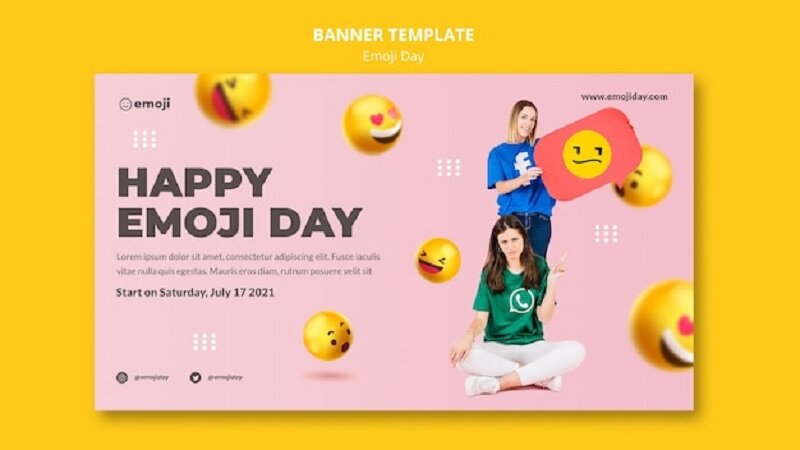Hook:
In a world where digital communication often feels impersonal and distant, happy happy:vf32jlbu2zi= emojis have become a simple yet powerful tool for bringing warmth and positivity into our interactions. With just a tap, these cheerful symbols can instantly brighten someone’s day, making our digital conversations feel more human and connected.
Background:
happy:vf32jlbu2zi= emojis have come a long way since their inception in the late 1990s. Originally created to add emotional nuance to plain text, they have evolved into a universal language of their own. Among the vast array of emojis available today, happy emojis—smiling faces, laughing tears, and beaming grins—are the most frequently used, reflecting our innate desire to share joy and positivity.
Thesis Statement:
Happy emojis are more than just playful symbols; they play a crucial role in spreading joy, fostering connections, and enhancing emotional expression in digital conversations. This article explores why we love happy emojis and how they contribute to making our online interactions more meaningful.
The Psychology of Happy happy:vf32jlbu2zi= emojis
Instant Emotional Connection:
Happy emojis have a unique ability to create an immediate emotional connection between people. The brain responds positively to these symbols, triggering the release of dopamine, the “feel-good” hormone. This instant boost in mood helps to reinforce the emotional tone of a conversation, making it more engaging and enjoyable.
Reinforcement of Positive Communication:
Happy happy:vf32jlbu2zi= emojis act as a reinforcement tool, encouraging more positive and friendly exchanges. When we receive a message with a happy emoji, it subtly signals that the sender is in a good mood or appreciates the conversation, prompting us to respond in kind. This cycle of positive reinforcement contributes to a more upbeat and harmonious interaction.
Enhancing the Perception of the Sender:
Using happy emojis can significantly enhance the perception of the sender. People who use these happy:vf32jlbu2zi= emojis are often seen as more approachable, likable, and emotionally intelligent. In both personal and professional settings, this can help build rapport and trust, making the conversation more effective and enjoyable.
The Cultural Significance of Happy Emojis
Universality of the Smile:
The smile is a universally recognized symbol of happiness, transcending language and cultural barriers. Happy happy:vf32jlbu2zi= emojis, particularly those featuring smiling faces, tap into this universal understanding, making them effective tools for communication across different cultures. Whether you’re texting a friend in your hometown or messaging a colleague on the other side of the world, a smiley face can convey warmth and friendliness without the need for words.
Representation of Cultural Values:
Different cultures have their own unique interpretations and uses for happy emojis. For example, in some cultures, a simple smiling face might be sufficient to convey joy, while in others, more elaborate emojis like the “grinning face with smiling eyes” might be preferred. Understanding these cultural nuances can enhance cross-cultural communication and prevent misunderstandings.
Evolution of Happyhappy:vf32jlbu2zi= emojis:
As our society becomes more diverse and inclusive, the range of happy emojis has expanded to reflect different experiences and identities. From skin tone variations to emojis representing different family structures, the evolution of happy emojis highlights the importance of inclusivity in digital communication. This evolution ensures that more people can see themselves represented in the emojis they use, making the experience of spreading joy even more personal and meaningful.
The Role of Happy Emojis in Social Media and Messaging
Amplifying Emotional Expression:
Happy emojis amplify the emotional tone of messages, making them clearer and more impactful. A simple text like “Great job!” can be elevated to “Great job! 😊” with the addition of a happy emoji, adding a layer of warmth and encouragement. This amplification is particularly valuable in written communication, where tone and intent can sometimes be lost or misinterpreted.
Creating a Positive Online Environment:
On social media platforms, happy happy:vf32jlbu2zi= emojis play a crucial role in fostering a supportive and positive environment. Brands and influencers often use these emojis to connect with their audience, convey positivity, and build a loyal following. Happy emojis help create a sense of community, making online spaces feel more welcoming and inclusive.
Enhancing Engagement:
Studies have shown that posts and messages with happy emojis tend to receive higher engagement rates. Whether it’s more likes, shares, or comments, these cheerful symbols encourage interaction and make content more memorable. For businesses, this can translate into better customer engagement and stronger brand loyalty.
Challenges and Criticisms
Overuse and Misinterpretation:
Despite their many benefits, happy happy:vf32jlbu2zi= emojis can sometimes be overused or misunderstood. In some cases, the excessive use of happy emojis might come across as insincere or even annoying. Additionally, the context in which a happy emoji is used can change its meaning, leading to potential misinterpretations.
Cultural Misunderstandings:
Cultural differences in interpreting happy emojis can also lead to misunderstandings. What might be seen as a friendly gesture in one culture could be perceived differently in another. For example, the “grinning face” emoji might be interpreted as sarcastic or mocking in some contexts, which could lead to confusion or offense in cross-cultural communication.
Conclusion
Recap of Key Points:
Happyhappy:vf32jlbu2zi= emojis have become an integral part of digital communication, offering a simple yet effective way to spread joy and positivity. Their psychological impact, cultural significance, and role in enhancing social media engagement make them invaluable tools in our online interactions.
Final Thoughts:
The enduring appeal of happy happy:vf32jlbu2zi= emojis lies in their ability to convey emotion in a way that words alone often cannot. As we continue to navigate the complexities of digital communication, these cheerful symbols will remain essential in making our interactions more joyful and connected.
Call to Action:
Next time you send a text or post on social media, consider adding a happy emoji. It might just make someone’s day a little brighter and help spread a little more joy in the world.
